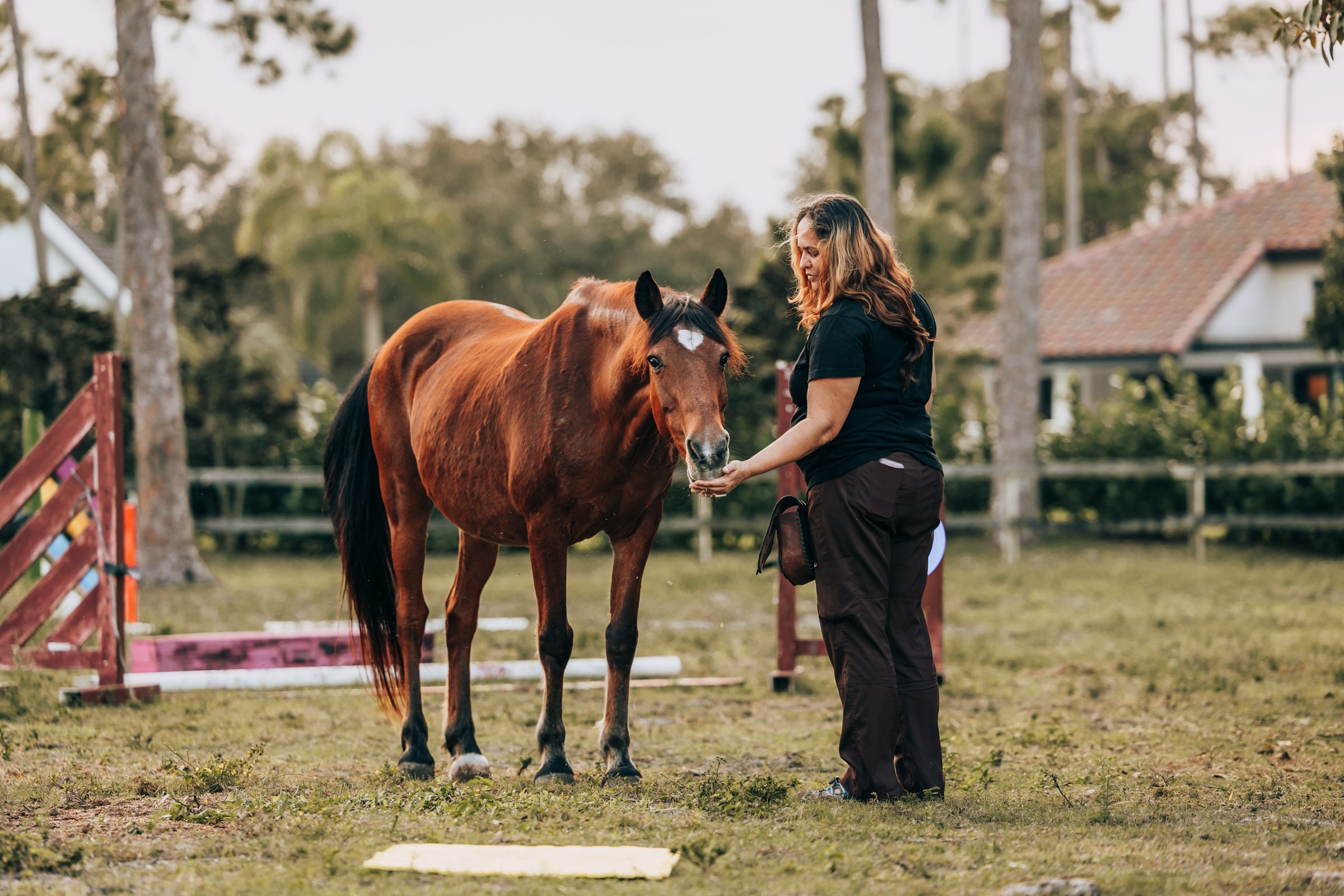It’s OK To Hand Feed Your Horse
There is a common belief that hand-feeding your equid treats will create a muggy monster that will push you around, constantly search you for food, and probably start biting. However, you can successfully hand-feed treats to your equid without this happening if you follow a few simple guidelines.
Consider the animal you have.
Some equids are more prone than others to become muggy monsters when you start feeding them by hand. Equids that have pre-existing issues around food and equids that are already naturally mouthy are good examples of these. You can still successfully hand-feed these equids; you just have to make sure that your food delivery systems are extra clear and consistent. For these equids, starting out in protected contact and/or feeding from a bucket can be helpful while they’re learning the rules around hand feeding.
Feed at arm’s length.
Hand-feeding your equid close to your body may encourage them to search for treats on your person, especially if they can smell the food in your pockets or your treat pouch is right under their nose. To help prevent this, always feed your equid at arm’s length away from your body, so they learn that the treat comes to them. As well as feeding at arms length, it’s also beneficial to feed your equid in a position that promotes relaxation. When you feed in such a way that brings your equid’s nose in towards there chest, causing their neck to curl, you may find that they exhibit more frustration and anxiety than if you feed in such a way that brings their nose out forward, with a soft curve in their neck
Timing is essential!
You’ve just gone for a lovely ride around the arena on your horse, and now you’re standing at the gate just hanging out, and he’s rubbing his head on you. You give him a treat because you want to reward him for such a nice ride. Unfortunately, because he’s rubbing his head on you at that moment, rubbing his head on you is what you’re rewarding, not the ride. Even when you’re giving your equid a treat ‘just because,’ it’s likely that you’re inadvertently reinforcing some behavior, whether you realize it or not. It’s best always to be aware of what your equid is doing and only deliver the treat when they’re doing something that you like so that you don’t accidentally reinforce a behavior you don’t want.
How much does your equid love that treat?
Equids almost always appreciate a little extra food, but some treats are more valuable than others, and this can cause problems if you’re not paying attention to just how much your equid values the treat in your pocket. Consider using something less valuable if your equid is too excited after giving them a treat. Many equids are perfectly happy just getting an extra handful of their regular feed as a treat.
Make sure your equid is getting enough to eat.
Suppose your equid is only fed two or three times a day and has no grazing opportunities. In that case, even though they may be getting the amount of food they need, they will still feel deprived because there is too much time between meals. Your equid is going to be ten times more likely to turn into a muggy monster than an equid who has hay, forage, or grazing available 24/7. Unfortunately, many of us are not able to provide hay or grazing 24/7. If this is the case for you, feeding your equid hay before you start training and having hay available during training can help to reduce your equid’s frustration.
Even if you don’t follow these guidelines, it’s still okay for you to hand feed your equid. These tips are to help you avoid potential problems. For more safe hand-feeding tips, check out this video:

